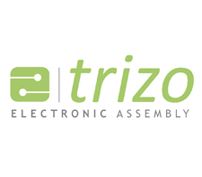- Contact 0870 350 7767
- |
- Advertise
Home > Trizo Limited > High-Temperature Resilient SMT Assembly
High-Temperature Resilient SMT Assembly
 News and PR from Trizo Limited - Published 18 November 2015
The development of interconnect materials to sustain high temperatures in SMT assembly
News and PR from Trizo Limited - Published 18 November 2015
The development of interconnect materials to sustain high temperatures in SMT assembly
An SMT assembly that is the basis of components used for the aerospace, oil and gas, automotive and power generation industries has to be able to sustain high temperatures and extreme ambient conditions. This need has been driving research into finding new materials to replace those exempted under Restrictions on the use of certain Hazardous Substances (RoHS) in electrical equipment - a European Union directive that became part of UK law in 2013.
This law restricts the use of certain substances - among them lead, chromium and mercury - to specific levels, but these exemptions will expire in 2016. With the end of the use of lead for high-temperature SMT assembly solder, the search has been on for a suitable replacement alloy.
Over the past three years, Innovate UK, a British government agency, has been heading up a research project called Electronic Component Sintered Interconnections (Elconsint). The aim is to develop a new polymeric material suitable for sintered interconnections to replace alloys with a high lead content. These should be able to operate up to temperatures of at least 225 degrees C, and possibly beyond. Other partners in the project are the National Physical Laboratory, Microsemi Semiconductor and Gwent Electronic Materials.
The scientists are hoping to develop a paste-like solder that can be processed at low temperatures but that will perform at high temperatures. This material has to be strong enough to support all joints on the SMT assembly for the lifetime of the electronic component. It also has to be cost-effective and competitive with existing materials on the market.
The work has produced a number of paste materials that behave like a conductive adhesive. These are essentially silicone resins that can sustain high temperatures. Silver flakes and powders as well as metallo-organic substances and solvents have been added to the base so that the resulting material would be printable and capable of being sintered at a low temperature.
These materials have been tested on resistors and other components made of polyamide glass and on printed circuit boards made of PTFE ceramics, or on a ceramic substrate that had a finish of a thick film of gold. The combination was cured in a batch over for 35 minutes at 250 degrees C.
The Elcosint research project has succeeded in producing a series of new interconnect materials that offer a viable alternative to high lead content solder.
Please contact us if you need more information on SMT Assembly and ways in which we can help you.
This law restricts the use of certain substances - among them lead, chromium and mercury - to specific levels, but these exemptions will expire in 2016. With the end of the use of lead for high-temperature SMT assembly solder, the search has been on for a suitable replacement alloy.
Over the past three years, Innovate UK, a British government agency, has been heading up a research project called Electronic Component Sintered Interconnections (Elconsint). The aim is to develop a new polymeric material suitable for sintered interconnections to replace alloys with a high lead content. These should be able to operate up to temperatures of at least 225 degrees C, and possibly beyond. Other partners in the project are the National Physical Laboratory, Microsemi Semiconductor and Gwent Electronic Materials.
The scientists are hoping to develop a paste-like solder that can be processed at low temperatures but that will perform at high temperatures. This material has to be strong enough to support all joints on the SMT assembly for the lifetime of the electronic component. It also has to be cost-effective and competitive with existing materials on the market.
The work has produced a number of paste materials that behave like a conductive adhesive. These are essentially silicone resins that can sustain high temperatures. Silver flakes and powders as well as metallo-organic substances and solvents have been added to the base so that the resulting material would be printable and capable of being sintered at a low temperature.
These materials have been tested on resistors and other components made of polyamide glass and on printed circuit boards made of PTFE ceramics, or on a ceramic substrate that had a finish of a thick film of gold. The combination was cured in a batch over for 35 minutes at 250 degrees C.
The Elcosint research project has succeeded in producing a series of new interconnect materials that offer a viable alternative to high lead content solder.
Please contact us if you need more information on SMT Assembly and ways in which we can help you.
Other announcements from Trizo Limited
-
Embedded Passives in PCB Manufacturing
Embedding components during PCB manufacturing reduces device sizes and manufacturing costs.
18 Nov 2015
-
Improving Cleaning Methods During Electronic Assembly
Safe solder cleaning during electronic assembly is needed to avoid damage to printed circuit boards.
18 Nov 2015





